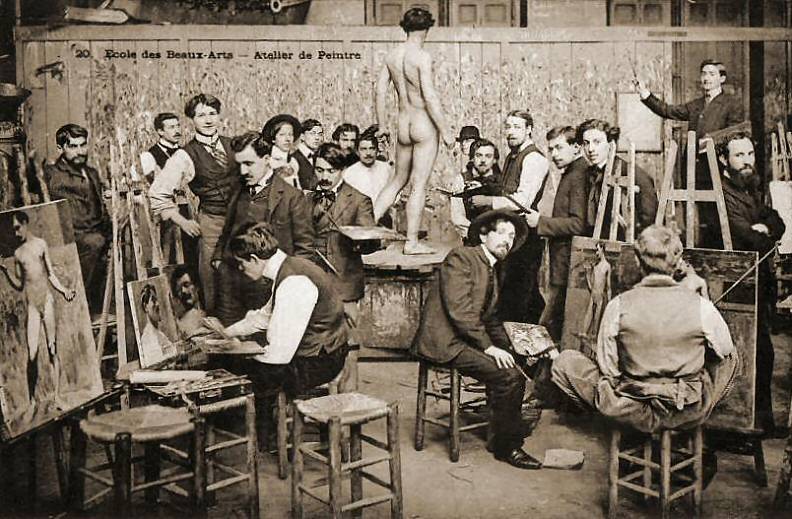The Ecole des Beaux-Arts
Harrison C. White and Cynthia A. White, Canvases and Careers: Institutional Change in the French Painting World (Chicago: University of Chicago Press, 1993), pp.16-18.
The Ecole des Beaux-Arts, outgrowth of the prerevolutionary
Academy's Ecole du Louvre, was the basic step for the uninitiated young artist. Training was long and rigid, consisting entirely of drawing, until the reforms of Count Nieuwerkerke late in the Second Empire
[The Second Empire lasted from 1852 to 1870] From the copying of drawings the student graduated to plaster casts of classical statues and finally to the living model. From the first entrance competition where the weeding-out process finally produced perhaps 40 admittees and 80 continuing students, life at the Ecole was a series of contests. There were yearly medals for the best works and all who did not win them were required to keep on taking the annual examinations. The culminating contest of the student years begun at the Ecole was the Prix de Rome competition.

After the Ecole or sometimes while still attending it, the student obtained admittance to one of the painting ateliers where he paid a monthly fee to the master and was allowed to begin painting studies of the nude male or female model, which was again the basic subjects. There were a number of well-known professional teachers of painting and most of the Academy members maintained ateliers. The master appeared once a week and made his rounds, criticizing and correcting according to Academy doctrine.